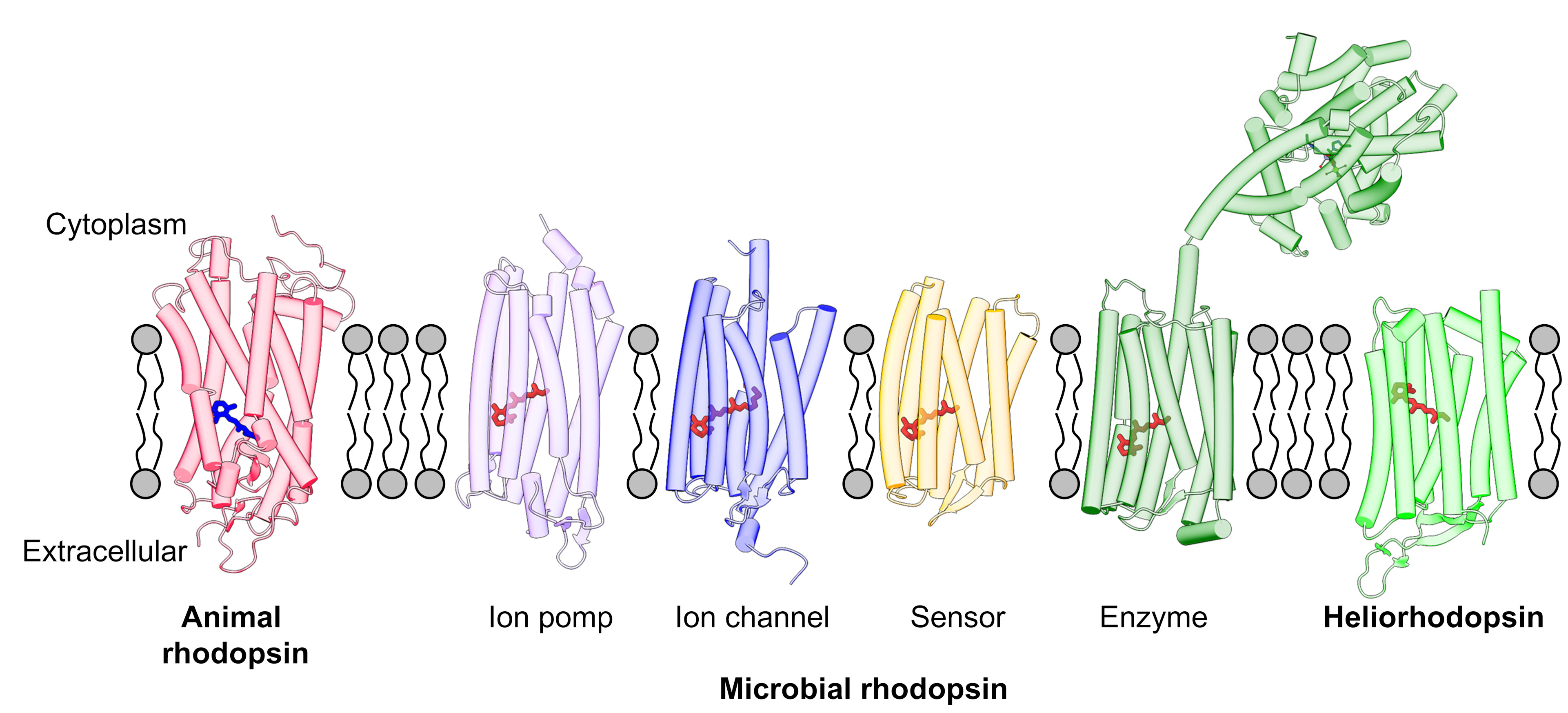Energy conversion system of rhodopsins
Rhodopsins are photoreceptive membrane proteins that contain retinal as their chromophore. By expressing various rhodopsins, living organisms can capture light and utilize its energy for physiological phenomena. Animal rhodopsins function as G protein-coupled receptors, which are essential for vision. Microbial rhodopsins, on the other hand, serve as ion pumps, ion channels, sensors, and enzymes. New families of microbial rhodopsins have been discovered, such as heliorhodopsins, which exhibit reverse membrane orientation, and bestrhodopsins, which possess one or two rhodopsin domains along with a Cl⁻-transporting Bestrophin domain. Despite the discovery of various rhodopsins, the molecular mechanisms of their photoreactions and physiological functions remain a mystery.

Using spectroscopic methods (UV-vis and FTIR spectroscopy) and electrophysiological techniques (patch clamp), we analyzed rhodopsins to elucidate their photoreaction, unique functions, and diversity.
Research techniques
We have share the student rooms and research equipments with Furutani Lab (PI: Yuji Furutani) and katayama Lab (PI: Kota Katayama), including the research progress and labolatory events.